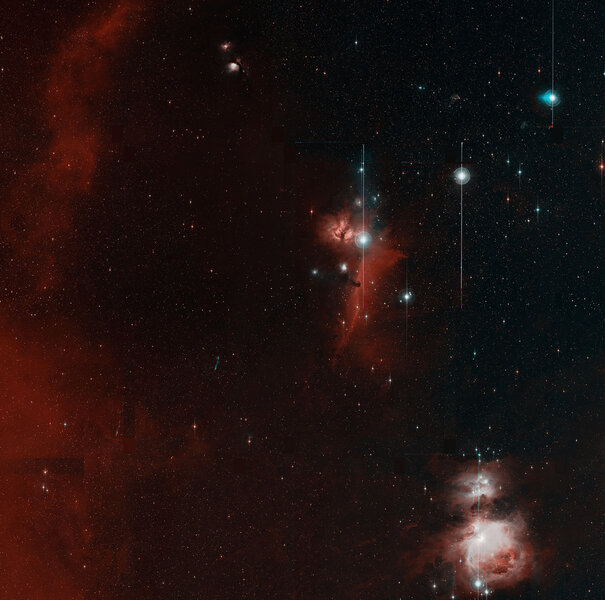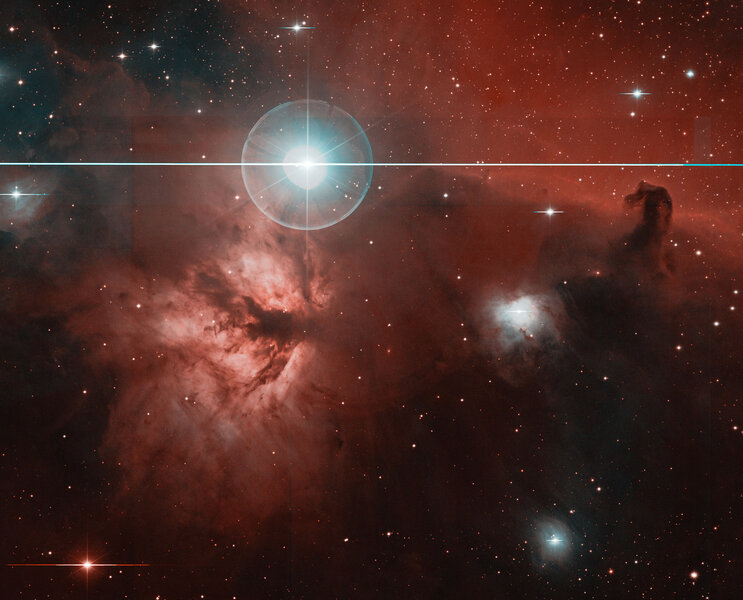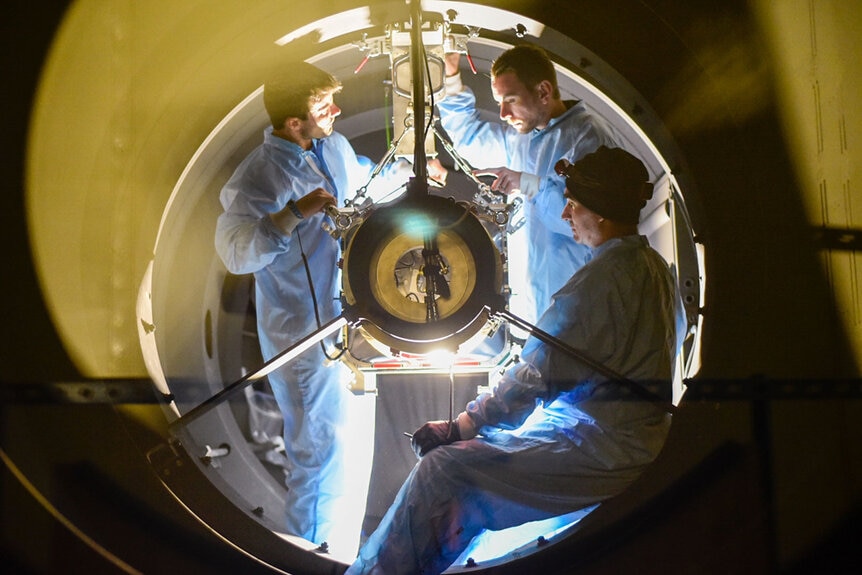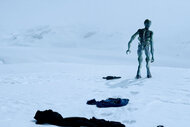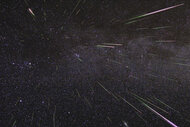Create a free profile to get unlimited access to exclusive videos, sweepstakes, and more!
A new observatory keeps a very, very large eye on the sky
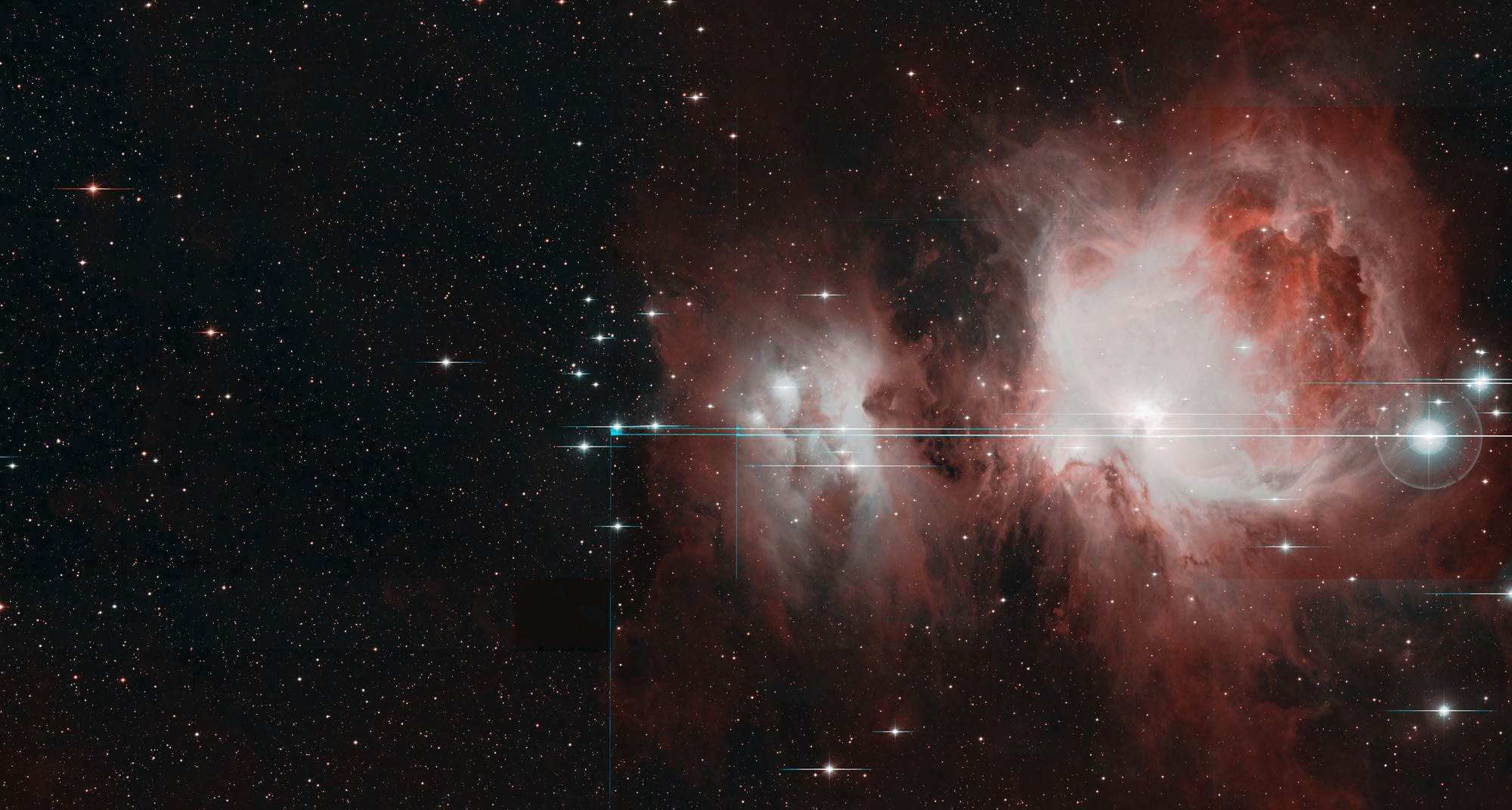
The sky is big, and that's a problem.
A lot of stuff is happening above your head right now. Asteroids are moving, stars are exploding, black holes are flaring. These objects are so far away they are teeny tiny, lost in the vast expanse of the heavens.
If you want to watch a lot of objects, or find new ones, or discover things that change rapidly, then you have to cover a lot of real estate in the night sky. Astronomers used to do this slowly, painstakingly, looking at one small patch of the sky, and then another. Then you have to go back to the first spot you looked at in a few nights to see what's changed. It was incredibly inefficient.
Things changed when we started using digital detectors. They are more sensitive to light, can cover larger areas of the sky, and software can be used to parse through the reams of data. There have been some pretty big leaps forward, like with Pan-STARRS, which has a field of view 3° across — six times the width of the full Moon.
And another big leap has already begun: The Zwicky Transient Facility is now getting started. The camera, mounted inside a 1.3-meter telescope located at Caltech's Palomar Observatory in California, is staggering: It boasts a 600-megapixel camera — it's more than 24,000 x 24,000 pixels in size! — and can take down an area of the sky near 7° across. That's the equivalent area of nearly 250 full Moons!
Yeah, this is a big deal. It will be able to scan the entire visible sky from its location over just three nights. And the images … well, look:
Holy wow! That's beautiful! You might recognize it, too: It's Orion; you can see the three stars marking the iconic belt to the upper right, and the always-lovely Orion Nebula to the lower right. This is very roughly the same size patch of sky you'd see with a standard pair of binoculars.
And oh, did I mention that I had to shrink this image by a factor of 20 to get it to fit on the blog?
Yeah, the full-size image is incredible. Here's a small part of it:
OK, fine. I lied. That's still not full res. To show you the wondrous pairing of the Flame Nebula (left) and the obviously named Horsehead Nebula (right) at the same time, I had to shrink this section by a factor of two. This camera takes a serious amount of data. Four terabytes per night, in fact.
As an aside, I'll note that this image has been cleaned up a bit, but there are a lot of artifacts (that is, things that aren't real) in it. I saw some interesting internal reflections, and of course the stars have structures around them including those long spikes (called blooming, this is from the individual pixels getting saturated with light; they bleed into the other pixels in their row). All of these cosmetic issues have to be dealt with by the software processing the data, plus lots of other issues that aren't obvious in the image. It's a daunting task.
But a very important one. The ZTF is the heir to the Palomar Transient Facility, a massive sky survey that used the same telescope and was upgraded to the intermediate Palomar Transient Facility, in preparation for the ZTF. The term "transient" means things that come and go in the sky, and that covers a lot of territory. But one of the most interesting categories scientifically is supernovae.
These are exploding stars. In general a supernova emits a flash of light and fades very rapidly, then gets brighter over a couple of weeks. Eventually that peaks and it fades away (though the details can be interesting). There are so many stars in the Universe that there is a supernova going off somewhere literally every second of every day! Most are far too faint to see, but with more telescopes and more sensitive cameras scanning the sky, we see more all the time. In 2016 over 6,400 were detected, but ZTF will make this number larger.
And as you may remember, it was big news in October when astronomers announced detecting the fading afterglow when a pair of neutron stars merged and exploded, creating gravitational waves as well as light across the electromagnetic spectrum. ZTF will be very useful in this, since the telescope can be moved extremely rapidly (in under a minute!) and take images of a large area of the sky.
Also, as you may know, I have a particular interest in asteroids and comets, and it should find plenty of those as well. It'll also observe thousands we already know about, refining their orbits and giving us a better understanding of how they behave.
Right now, ZTF is in the "survey phase," a shakedown cruise. It'll start science survey operations in February 2018 to run through 2020. And even then more will be coming; the Large Synoptic Survey Telescope will blow everything before it away: It will use a 3,200-megapixel camera mounted on an 8.4-meter telescope! To be honest, I'm not even sure what that data will look like. It'll be over 10 terabytes a night, so there'll be a lot to sift through.
I cannot stress enough how exciting these surveys are. Besides the interesting information we'll gather on objects we already understand, what will they find that we don't? What rare treasures, what one-in-a-million objects will they find that previous observations missed?
How much more is there to learn?
